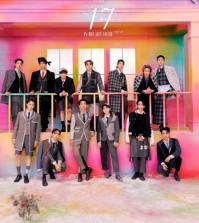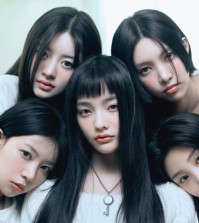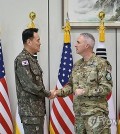- California Assembly OKs highest minimum wage in nation
- S. Korea unveils first graphic cigarette warnings
- US joins with South Korea, Japan in bid to deter North Korea
- LPGA golfer Chun In-gee finally back in action
- S. Korea won’t be top seed in final World Cup qualification round
- US men’s soccer misses 2nd straight Olympics
- US back on track in qualifying with 4-0 win over Guatemala
- High-intensity workout injuries spawn cottage industry
- CDC expands range of Zika mosquitoes into parts of Northeast
- Who knew? ‘The Walking Dead’ is helping families connect
Top Gun: Female fighter pilot Pyun Bo-ra
Major Pyun Bo-ra says she is not just the first female fighter pilot.
By Kang Seung-woo
Maj. Pyun Bo-ra is always tagged as the Air Force’s first female fighter pilot.
She was one of 20 female cadets when the Air Force Academy opened its doors to women in 1997 ― the first of the military branches ― and became one of five female pilots to fly fighter jets for the first time in Korean Air Force history.
However, the 35-year-old has shown that she is not just a female officer resting on her laurels, but one who has established herself as a real soldier in the male-dominated organization.
“I do not think about pride coming from being the nation’s first female officer and first female fighter pilot,” said Pyun, who was commissioned in 2001. “In the early stage of my career, I sometimes kept it in mind, but it did not work for me. Now I try to forget it on purpose.”
She admitted that the title was more of a burden in that she had to behave herself for fear of tarnishing the reputation of all female soldiers.
Pyun, a native of Yeongdong, North Chungcheong Province, was a teenage girl who dreamt of becoming a pianist until midway through high school. But, after hearing that she could take up active hobbies like golf, paragliding and horse-riding, from her English teacher, the energetic Pyun drastically changed her course in life.
When graduating from the school, she and her fellow pilots faced many restrictions.
They all had to be stationed in the Eighth Fighter Wing in Wonju, Gangwon Province and they could only fly F-5 fighters and A-37 light attackers.
“Now, I see the decision as the Air Force’s consideration for the inexperienced female pilots,” said Pyun, who decided to fly the A-37.
She added that only instructors who had a daughter or sister were selected to teach the female officers because they thought that woman might have trouble in adapting to the male-only community.
However, the major, who performed solid piloting skills, began to prove that the preconceived notion was wrong.
Pyun, a then-first Lieutenant, won one event of the Air Force’s Boramae Aerial Gunnery Competition in 2004, outscoring male pilots. The air-to-ground strike event required a pilot to fly an aircraft below 150 meters at a speed of 540 kilometers per hour.
In addition, she said that compared with male pilots, she has little trouble in flying aircraft.
“I have not experienced much physical difficulty in flying an aircraft due to my gender,” she said. “Whether it is true or not, I read a paper that said women can overcome G-force while in flight better than men.”
She said that now female officers are getting more opportunities in the military, maybe thanks to efforts of their seniors, including Pyun. For example, the Air Force has allowed female officers to fly F-16s as well.
Since last year, Pyun has served as air warfare officer of the joint exercise supporting group at the Joint Chiefs of Staff, and two future options are waiting for her — assuming the vice commander position at the third Flying Training Wing in Sacheon, South Gyeongsang Province or flying a fighter jet again.
Should she fly a combat plane, she will change her aircraft because the A-37 is not in service any longer.
“My family, including my 7-year-old son, is encouraging me to fly a fighter jet again,” she said.
There is an aircraft that she has in mind.
“Right now, it is just about half and half,” she said.
Although Pyun may not pilot a fighter jet, she will nevertheless be satisfied because of the teaching that she does.
“One of my most rewarding moments is when students whom I taught become pilots and thank me,” she said.
















